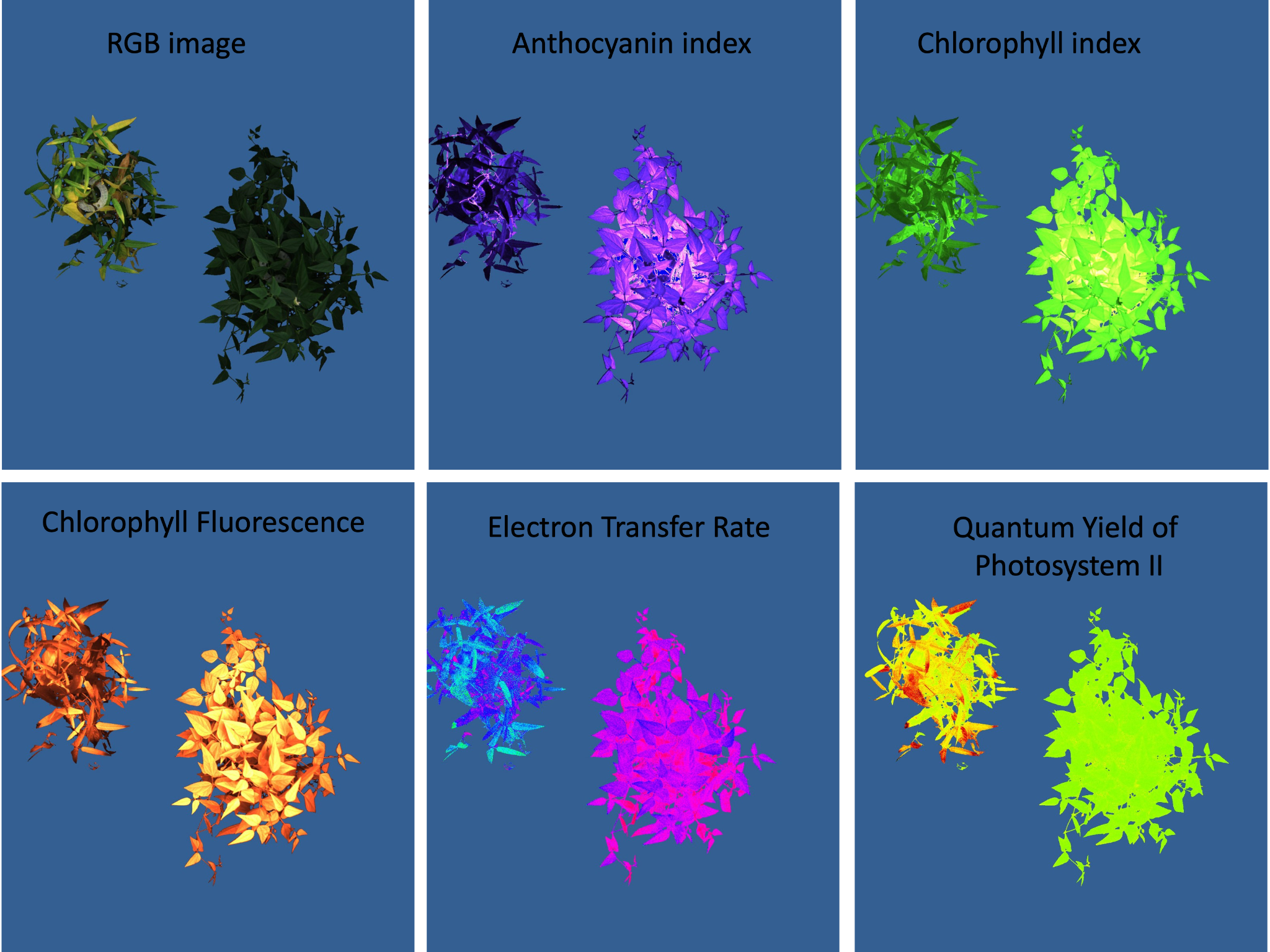BTI Plant Phenotyping Facility
In the era of big data and machine learning, high-throughput plant phenotyping generates vast amounts of data that can be analyzed using advanced computational methods. This data-driven approach allows researchers to uncover hidden patterns, make predictions, and discover novel insights into plant biology and genetics. The BTI Plant Phenotyping Facility provides a suite of imaging tools for studying plant growth and development. Our facilities include a high-throughput imaging system, a multi-spectral imaging system, and a time-lapse imaging system. We also offer a variety of services, including plant imaging, image analysis, data visualization, and data interpretation.
If you are negatively impacted by flashing lights, please watch this version.
We are now offering tours of the facility starting on April 3rd!
High-Throughput Imaging System
Our high-throughput imaging system is capable of imaging up to 64 large plants (up to 1 m / 3 foot tall), or 1280 smaller plants. The plants are grown within the growth chamber on conveyor belts in special trays that carry information on plant genotype and treatment. Imaging with 12 MPixel side and top-view chlorophyll fluorescence / red-green-blue (CF/RGB) camera, Multi-Spectral camera (top view only), and watering rounds are programmed in the Experimental Control System. The RGB images are automatically masked based on chlorophyll fluorescence, which allows us for real-time extraction of plant height, which is used to adjust position of Multi-Spectral Imaging System for highest level of precision. This system is ideal for studies of plant growth and development, as well as for studies of plant responses to environmental stresses.

Image captured with the CF/RGB camera: The chlorophyll fluorescence image (left) is being used to mask the RGB image (right). The CF masks are applied automatically and result in real-time calculation of generic plant morphometric traits, such as plant height, area, and digital biomass.
High-throughput phenotyping growth chamber specifications: temperature range 4 – 36C, relative humidity 30 – 80%, ligh intensity 100 – 800 umol PAR with broad white spectrum + infrared + UVB lights, CO2 from ambient to 9,000 ppm
Multi-Spectral Imaging System
Our multi-spectral imaging system, PhenoVation CropReporter, allows us to capture the chlorophyll fluorescence of plants and image them in multiple wavelengths of light. By studying chlorophyll fluorescence at various light conditions, we can extract information on the efficiency of photosystem II. Multiple wavelength imaging provides us with chlorophyll and anthocyanin indices. This system is ideal for studies of plant physiology and resilience to various treatments, prior to changes in overall leaf coloring. The Multi-Spectral Imaging System can be used in conjunction with High-Throughput Imaging System, or as a stand-alone system to image individual leaves, fruits, or agar-plate grown plants.

Time-Lapse Imaging System
Our time-lapse imaging system allows us to capture images of plants over time. This information can be used to study plant growth and development, as well as plant responses to environmental stresses. The Time-Lapse Imaging Systems are currently available for agar plate-grown plants (SPIRO), and soil-grown plants that can be imaged from top-view (e.g. Arabidopsis, PhenoRig), or side (e.g. tomato, PhenoCage).
Services
In addition to our imaging facilities, we also offer a variety of services, including:
- Image analysis
- Data visualization
- Data interpretation
We can help you to analyze your imaging data and to interpret your results. We can also help you to create figures and tables for your publications.
Contact Us
For more information about our plant phenotyping facility, pricing, and availability, please contact us at BTI.pheno@cornell.edu
If you are interested in using the Phenotyping Facility please fill in the project intake form and send it to mmj55@cornell.edu

